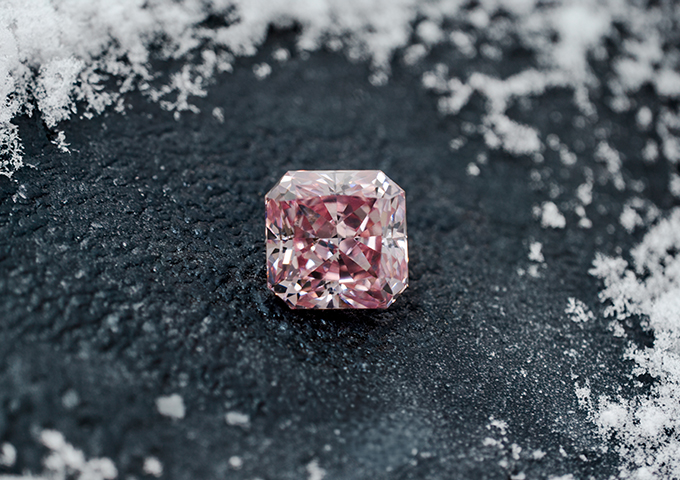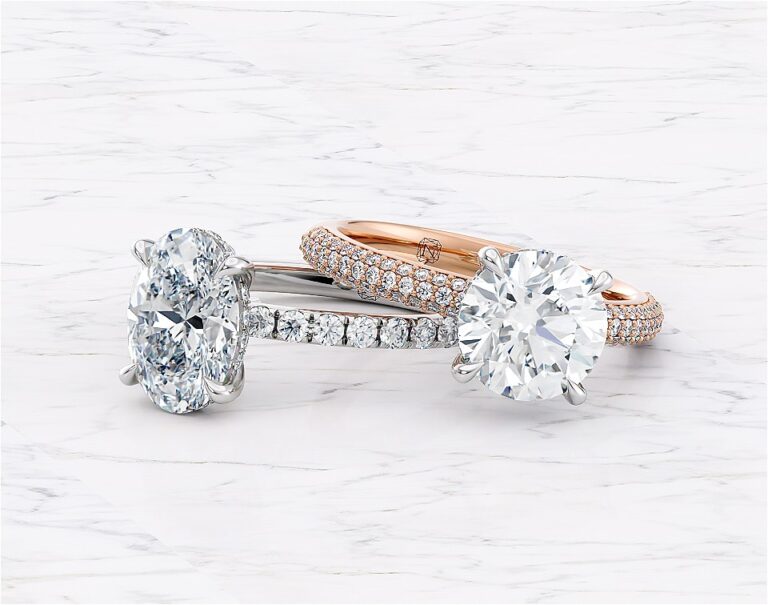By Master Craftsman Nick Ireland
Over the last four decades, I’ve watched the diamond industry evolve in ways we never thought possible. But no matter how much things change, one truth remains: not all diamonds are created equal.
That’s why I’m pleased to see the Gemological Institute of America (GIA) taking a major step forward in how it grades lab-grown diamonds, a move that finally brings clarity to an area full of confusion and, quite frankly, misleading marketing.
Let’s break it down.
GIA’s New Lab-Grown Diamond Grading System (2025)
Starting later in 2025, GIA will shift away from grading lab-grown diamonds using the same 4Cs system (Cut, Colour, Clarity, Carat) originally developed for natural diamonds.
Instead, they will adopt a new descriptive grading framework designed specifically for lab-grown stones. This includes:
- Identifying the growth method used: Chemical Vapor Deposition (CVD) or High Pressure High Temperature (HPHT)
- Noting any post-growth treatments applied to enhance colour
- Laser-inscribing every lab-grown diamond with the words “LABORATORY-GROWN” and its report number
- Assigning each stone to a “premium” or “standard” category based on its combination of colour, clarity, and finish
“The revised GIA description system for laboratory-grown diamonds will confirm that the submitted item is a laboratory-grown diamond and whether it falls into one of two categories, ‘premium’ or ‘standard.’” – GIA
This isn’t just a technical change, it’s a necessary correction in how we communicate the real difference between lab-grown and natural diamonds.
Lab-Grown Diamonds: Visually the Same, Structurally Different
Lab-grown diamonds are exactly what the name implies: synthetic diamonds made by chemical synthesis, designed to imitate what nature takes billions of years to form.
And here’s the key point: just because they look the same doesn’t mean they are.
Lab diamonds are brilliant. They’re ethical. They’re more affordable. But they are not rare—and they are not natural. That’s why they are priced accordingly.
Natural Diamonds: Why Quality Still Matters
There’s a common misconception out there that “diamonds aren’t rare.” And in a way, that’s true, low- to mid-quality diamonds are not rare. But the diamonds we deal with, the very top tier…absolutely are.
To illustrate the reality of diamond rarity, let me share real numbers from one of the largest global diamond trading platforms used by wholesalers.
While we don’t typically source from this marketplace, instead we buy directly from select cutting and polishing houses with whom we’ve built trusted relationships over many years.
We used Nivoda on 22nd May 2025 to gather an accurate snapshot of what’s available across the broader market.
1 Carat GIA Certified Round Natural Diamonds
- Total: 13,559 diamonds
- Only 58 are D-E colour, Flawless-IF, Excellent Cut,Polish,Symmetry and No Fluorescence = 0.4%
- Only 362 are D-E, VVS2+ Clarity, Excellent Cut,Polish,Symmetry and No Fluorescence = 2.6%
- Only 769 are D-E, VS2+ Clarity, Excellent Cut,Polish,Symmetry and No Fluorescence = 5.6%
2 Carat+ GIA Certified Round Natural Diamonds
- Total: 21,011 diamonds
- Only 246 are D-E, FL-IF, Excellent Cut,Polish,Symmetry and No Fluorescence = 1.1%
- Only 625 are D-E, VVS2+, Excellent Cut,Polish,Symmetry and No Fluorescence = 2.9%
- Only 1,104 are D-E, VS2+, Excellent Cut,Polish,Symmetry and No Fluorescence = 5.25%
Total GIA Certified White Diamonds (0.15ct+)
- Total: 779,566 diamonds
- Only 27,543 meet D-E colour, VS2+, Excellent Polish, Symmetry, No Fluorescence = 3.53%
- And only 9,163 are D colour, VVS2+, Excellent Polish, Symmetry, No Fluorescence = 1.17%
These numbers don’t lie. The kind of diamonds we choose to work with, top-tier in colour, clarity, and finish, make up less than 1–3% of all GIA-certified diamonds. That’s a rarity.
The Bottom Line
The issue isn’t that diamonds aren’t rare. It’s that good diamonds are.
Lab-grown diamonds can be a great option for many, and we’re happy to offer them when they suit our client’s goals. But they shouldn’t be marketed as the same thing, they’re not.
And thanks to GIA’s new system, the difference will finally be clear on paper, not just in ethics or economics.
What I Tell My Clients
In my Brisbane studio, clients often ask, “Which should I choose, natural or lab-grown?” The answer isn’t black and white.
Instead, I ask:
“What’s most important to you, rarity or size? Story or sparkle? Investment or expression?”
For some, a natural diamond’s history and permanence hold deep meaning. For others, a larger lab diamond allows them to realise their dream design—without compromise.
Both are valid. But they are not the same. And now, finally, GIA’s grading standards will reflect that truth.
Our Philosophy
At our Brisbane studio, we’re not here to tell you what to buy.
Whether you fall in love with a rare natural diamond or choose a beautifully crafted lab-grown stone, our job is to educate you so that your choice is informed and meaningful.
Because when you understand the full picture, your diamond isn’t just beautiful, it’s significant.
Want to explore the differences in person?
Book a visit to our Brisbane showroom or schedule a virtual consultation. We’d be honoured to walk you through every detail.


